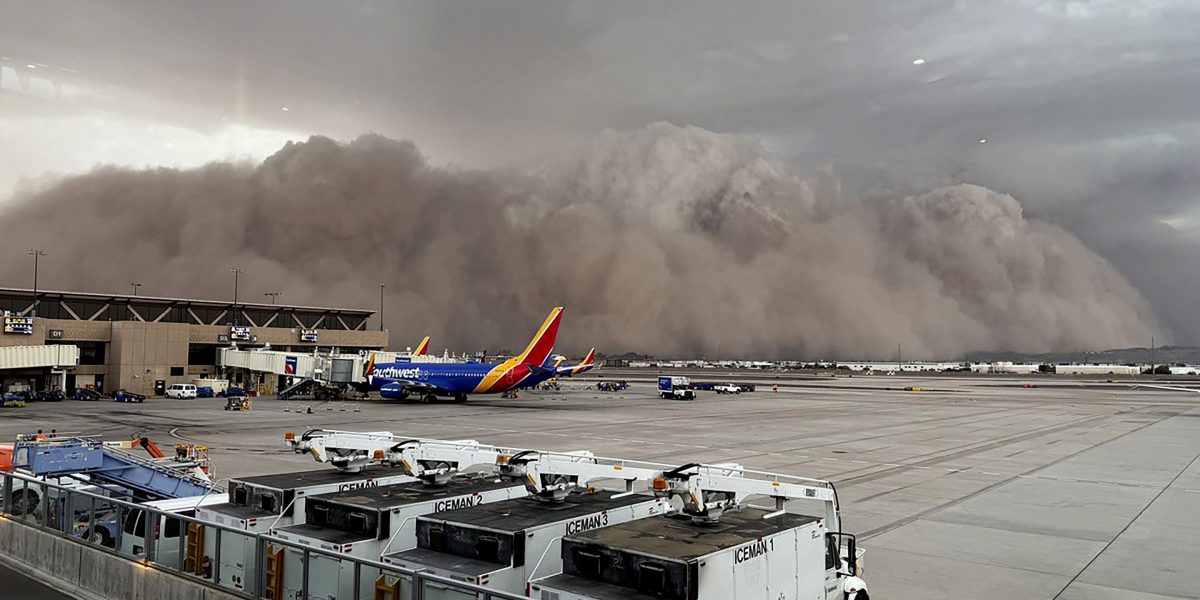
"Thunderstorms can produce strong downdrafts that hit the ground at 50-80 mph (80-129 kph) and then spread in all directions, said Sean Benedict, a meteorologist at the National Weather Service's Phoenix office. The winds stir up loose dust and dirt, including from arid areas and farm fields, that get blown along in front of the approaching storm cell."
"If thunderstorms don't keep developing, the dust dissipates. But rain-cooled air in front of a storm can keep pushing warm air upward, generating new storms and more downdrafts, Benedict said. When that happens, the haboob can keep growing, and some travel as far as 100 miles (161 kilometers), Benedict said. "It's all dependent on whether they're moving through an area that's prone to (generating) dust," said Benedict, noting that there's a prominent dust corridor between Phoenix and Tucson. Haboobs also can form in arid areas of Nevada, New Mexico and Texas."
"Scientists say localized bursts of rain in the U.S. Southwest during the monsoon season in summer have become more intense since the 1970s as the atmosphere heats up due to human-caused climate change. At the same time, it's raining less often as droughts last longer and some arid areas expand. Climate change increases the odds of both severe drought and heavier storms that could set the stage for more intense dust storms in the future. Benedict said it's difficult to say whether haboobs will become more frequent."
Thunderstorm downdrafts strike the ground and spread outward, lifting loose dust and dirt from arid lands and farm fields to form towering haboobs. Rain-cooled air ahead of storms can sustain upward motion, spawning new storms and additional downdrafts so the dust wall can grow and travel long distances, sometimes up to 100 miles. Haboobs commonly occur in dust-prone corridors between cities and across arid parts of Arizona, Nevada, New Mexico, and Texas. Climate change is increasing both intense rainfall bursts and prolonged drought, complicating future trends in dust-storm frequency and intensity. Land use affects how much dust is available to lift.
Read at Fortune
Unable to calculate read time
Collection
[
|
...
]